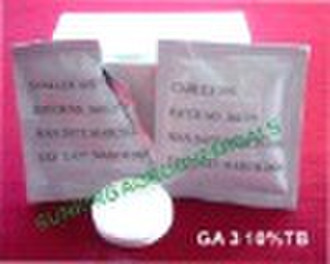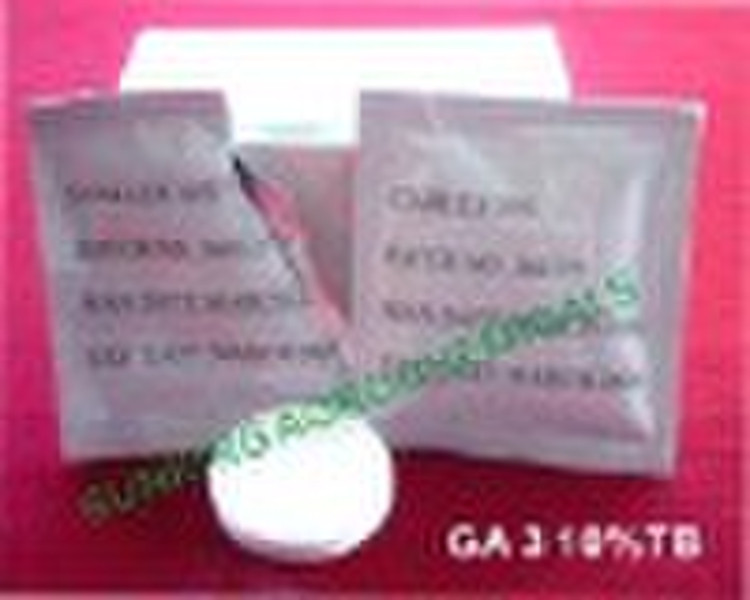Gibberellic酸

KYLE YU
联系人姓名
基本信息
| 分类 | Plant Growth Regulator |
|---|---|
| 化学文摘社编号. | 77-06-5 |
| 其他的名字 | Gibberellin A3 |
| 小额信贷 | C19H22O6 |
| Einecs编号没了 | 201-001-0 |
| 出生地 | China (Mainland) |
| 纯洁的 | >90% |
| 适用 | plant growth regulators |
| 牌子的名字 | Sunking |
| 国 | 粉 |
Common name: Gibberellic Acid Chemical name: (3S, 3aS, 4S, 4aS, 7S, 9aR, 12S)-7, 12-dihydroxy-3-methyl-6-methyllene-2-oxoperhydro-4a, 7-methano-9b, 3-propeno[1, 2-b]furan-4-carboxylic acid (IUPAC) Molecular Weight: 346.37 Specification: 1) crystal powder: 90%, 95% 2) emulsion concertrate: 4%, 6% 3) tablet: 10%, 16%, 20% 4) soluble powder: 3.1%, 10%, 20% 5) gibberellin paste: 2.7% GA was first identified in Japan in 1935, as a metabolic byproduct of the plant pathogen Gibberella fujikuroi, which afflicts rice plants; fujikuroi-infected plants develop bakanae ("foolish seedling"), which causes them to grow so much taller than normal that they die from no longer being sturdy enough to support their own weight. Gibberellins have a number of effects on plant development. They can: 1) stimulate rapid stem and root growth, 2) induce mitotic division in the leaves of some plants, 3) increase seed germination rate. Mode of action Acts as a plant growth regulator on account of its physiological and morphological effects in extremely low concentrations. Translocated. Generally affects only the plant parts above the soil surface. Uses Has a variety of applications, e.g. to improve fruit setting of clementines and pears (especially William pears); to loosen and elongate clusters and increase berry size in grapes; to control fruit maturity by delaying development of the yellow colour in lemons; to reduce rind stain and retard rind ageing in navel oranges; to counteract the effects of cherry yellows virus diseases in sour cherries; to produce uniform seedling growth in rice; to promote elongation of winter celery crop; to induce uniform bolting and increase seed production in lettuce for seed; to break dormancy and stimulate sprouting in seed potatoes; to extend the picking season by hastening maturity in artichokes; to increase the yield in forced rhubarb; to increase the malting quality of barley; to produce brighter-coloured, firmer fruit, and to increase the size of sweet cherries; to increase yields and aid harvesting of hops; to reduce internal browning and increase yields of Italian prunes; to increase fruit set and yields of tangelos and tangerines; to improve fruit setting in blueberries; to advance flowering and increase the yield of strawberries; and also a variety of applications on ornamentals. Application rates up to 80 g/a per application, depending on desired effect. Compatibility Incompatible with alkaline materials and solutions containing chlorine.
交货条款及包装
Packaging Detail: as customer's requirement. Delivery Detail: 7-15 days after order comfirmation
端口: shanghai
付款条款
Letter of credit
Telegraphic transfer
-
支付方式
我们接受:









